Under construction. In the meantime, try this link
What Tools Do I Need?


Under construction. In the meantime, try this link
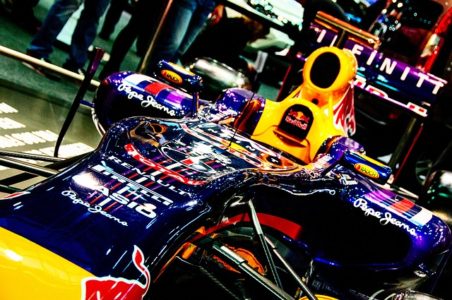
What should I buy?
What class are you going to be racing in? For Seniors, you have a choice. If you haven’t considered this before, then you should read the section in Getting Started on GET A KART
And when you read this article, you should keep in mind that this is your first kart. It doesn’t have to be the world’s best to be good value for money and tons of fun.
Chassis & engine – together or separately?
Generally speaking, if this is your first kart, you’ll be buying a package, although this is not always the case. However, whether or not you buy a chassis separately to buying an engine, you’ve still got the same considerations. New or secondhand? Where do I get it?
New or secondhand kart?
If you’re going to buy new, go to a kart shop. You’ll get advice, you’ll get help and if you’re buying a chassis & engine together, you’ll get it assembled for you.
Whether or not you buy new may be dictated by your budget, but even if you can afford new equipment, it’s not always the smartest thing to do.
If you’re a parent of a young child, how confident are you that your child will want to keep going?
If your child keeps going, he/she is going to grow, which means he/is going to grow out of the chassis. You will probably be able to buy one from someone else who has outgrown theirs, just as you will probably be able to sell the one your child has outgrown to someone coming into the sport.
However, if you buy a secondhand chassis, how do you know what condition it’s in?
Will you want to stay with the engine you have chosen to start with? If so, then you may have an engine for many years and you will get more value for money out of a new engine, making it more worthwhile.
Many of the engines for sale secondhand are still very good engines. You don’t actually need to buy a new engine to buy a good engine. You just have to have a fair idea that it is a good secondhand engine, and that comes down to finding someone to give you good advice. Kart shops can check out an engine for you to see what condition it’s in, how much life is left in it and how much power it’s putting out. Chassis are a bit trickier. Sometimes, you just have to get it on a track with an experienced driver in the seat to know, but if you check the basics, that’ll be a lot of your work done.
In the end, whenever you buy secondhand, you assume some degree of risk. It’s a question of are you prepared to accept that risk to save the dollars, and how can you reduce the risk?
Where is the best place to buy a kart from?
There are plenty of options. eBay. Gumtree. Classified Ads. Facebook. Kart Shops. Or it could be club-sourced.
If you buy through eBay, Gumtree, etc, you don’t know the person you are buying from, and can you tell how good the engine or chassis is? However, you will often find people who are selling all their kart gear and be able to get a trolley and a range of spares as well. You may be able to get really good gear at a bargain price but now your risk is a little higher.
Club-sourced
Club-sourced equipment comes with no guarantee from the club. However, people at kart clubs are often good people to get advice from. Additionally, kart gear for sale from active karters is often being sold because the seller is upgrading, or changing class, or has grown out of it, rather than because it’s worn out.
Kart Shops
Obviously, kart shops sell new equipment, but they will usually have some secondhand gear for sale on consignment as well. They often know the history of the chassis/motors. They have a reputation to maintain, so kart shops are usually pretty safe places to buy secondhand from. They are people involved in the sport and are usually passionate about the sport.
Choosing Kart Engines
Cadet 9 – Eligible engines: 1) Vortex Mini Rok, 2) Yamaha KT100J, 3) Comer
Cadet 12 – Eligible engines: 1) Vortex Mini Rok, 2) Yamaha KT100J
Junior – Eligible engines: 1) IAME KA100, 2) Yamaha KT100J
Senior: There are a wide range of eligible engines, which can be divided into 100cc and 125cc
100cc There are a number of engines which are eligible, but not used in WA. TaG100, for example, uses a Yamaha KT100SEC, but no kart club in WA runs the TaG100 class. Therefore, we will only look at engines which are most commonly seen. 1) Yamaha KT100J, 2) KT100S, 3) ARC, 4) IAME KA100
For – Can be used from Cadet 9 through to Seniors, and in the Seniors from Clubruns up to the State Championships. Plenty of secondhand engines available cheaply.
Against – The KA4 class is not offered at the 2017 States. On top of that, it has a power deficit to its alternative.
For – Very evenly matched against the Yamaha “S”, but with better low down torque. Can pick up cheaply, but not many around. Water-cooled, so more consistent power output on really hot days than the Yammy.
Against – Can run out of breath against the S down the straight. Can only be used in Sportsman WA, not KA3. Only good as an anchor interstate. Not used outside WA. Not in the hunt against the KA100.
For – Very evenly matched against the ARC. Better legs down the straight. Plenty of secondhand engines available cheaply.
Against – Can be used in the State Championships, but why would you? Not got the power of the KA100. Need to manage temps on really hot days.
For – Push button start. Can be the only engine you need from your first clubrun to the National Championships. Has more power than the alternatives. Air-cooled, so simpler and cheaper to maintain than water-cooled.
Against – First introduced in 2015, so not many secondhand ones around. Will cost more than the Yammies or the ARC.
Other eligible engines (that are not recommended other than for class E licence holders) are the Yamaha KT100SE/SEC/SD
125cc Eligible engines. Fireball, Galaxy, Leopard, IAME X30, Cheetah, Rotax, Rotax EVO
Although you have 7 different engines to choose from, the majority of drivers in these classes use the X30, Rotax or Rotax EVO.
This article is not intended to review the pros and cons of each individual engine. You can find reviews and seek opinions online, at the track, or speak to your friendly kart shop owner for that. I would simply make 4 points:
Choosing Kart Chassis
We could get into a Ford vs Holden vs Nissan argument except with different names, but it’s not going to help you decide. And it will be biased.
This is your first kart, right? At the risk of being howled down as a heretic – and just between you and me – it doesn’t really matter, as long as you get a chassis that’s matched to your engine. In the Cadets, it will be, so don’t sweat it. As a beginner, your kart is going to be able to outperform you, whatever chassis you have. The only advice on brand of chassis I would give is that if you buy one that is not commonly used, there will be less people around to help you get your setup right.
More popular chassis = more people to help you.
If you’re buying a new kart, a kart shop will make sure you have the right chassis for your engine. Naturally, they will be putting you in a chassis they sell, so if you want to hear about different chassis, go to different kart shops.
If you’re buying secondhand and you’re buying a ready-to-race engine/chassis package, there’s a reasonable chance they match. If you’re buying the engine and chassis separately, you’ve already got an engine and just need a chassis, or you’ve already got a chassis and just need an engine, then you need to be a little more careful. But here’s the good news: It still doesn’t matter much.
I just want something cheap to run around in to see if I like it.
Well, then, it doesn’t matter at all. 30/30 or 30/32? Don’t worry about it. 30mm axle, 40mm axle, 50mm axle? Don’t worry about it. Is the chassis twisted? Don’t worry about it. If you’re just testing the waters, get something cheap. But if you do this, be aware that if you like it, you may soon feel the need to spend money on an upgrade.
Seriously, though, why not get yourself a free test drive to see if you like it? Hurricane can help you there. Contact Matthew for information on that. If you like it, but you’re not quite ready to commit, then there is a turnkey option.
I want something that I can advance with, without having to spend a lot on upgrading.
A few years ago, the general trend was for 30/32 chassis. That’s referring to the size (in mm) of the tubing used for the frame, and different sizes were used in different places. These days, most of the karts are 30/30. So if you buy an older kart, it’s likely to be a 30/32. It’s your first kart and it’s not critical. The 30/32 can still be very competitive.
The rear axle is more important. If you’re looking at a kart with a 30mm rear axle, it’s an old kart. If you stay in the sport, it won’t be long before you’ll feel it’s limitations and you’ll want to ante up for a larger axle.
If you’re looking at a kart with a 40mm axle, you’re on safer ground. Just fine for Juniors. For Seniors, it’s fine for KA4. In KA3/Sportsman, it’s fine if you’re running a Yammy or an ARC. It will be okay in KA3/Sportsman if you’ve got a KA100, and it will be okay in Restricted 125, but in the last two cases, it’s not ideal.
If you’re looking at a kart with a 50mm axle, you can get away with that in Junior KA4 Heavy (not Light). For Seniors, it will be okay for KA4 and KA3/Sportsman fitted with a Yammy or an ARC. It will be ideal for KA3/Sportsman using a KA100 and for Restricted 125.
Let’s look at that in a table:
| Class/Engine | 30mm axle | 40mm axle | 50mm axle |
| Run-around only | Yes | Yes | Yes |
| KA4 Junior Heavy | Avoid | Ideal | Okay |
| KA4 Senior | Avoid | Ideal | Okay |
| KA3/Sportsman with ARC/Yamaha | Avoid | Ideal | Okay |
| KA3/sportsman with KA100 | Avoid | Okay | Ideal |
| Restricted 125 | Avoid | Okay | Ideal |
How can I tell if the chassis is any good?
Watch this video on what to check for when buying a chassis.
Turnkey vs Buying
Turnkey is not something that’s common in WA. Basically, it means you turn up at the track, turn the key to start and away you go. You don’t own the kart, you don’t have to store it or transport it, and you don’t have to have any tools. It’s all provided for you. Very convenient. However, that convenience comes at a price.
Pro – You don’t have to outlay a lot of money to get into kart racing. Don’t buy a kart. Don’t buy tools. Don’t have to have transport. Don’t have to have storage. If you’re not racing for a while, you haven’t got dead money laying around gathering dust.
Con – It depends upon the agreement you enter into, but generally, if you damage the kart or the engine, you would be liable for the cost of repairs. Every time you go on the track, even to practise, it’s going to cost you a significant amount.
It doesn’t take many turnkey outings before you’ve paid what you would have done if you’d bought your own equipment. It’s a good option as an ongoing thing if convenience, not money, is your main consideration. It may also be useful as a once- or twice-off thing to help decide if karting is for you.
Ask Matthew for more details on turnkey
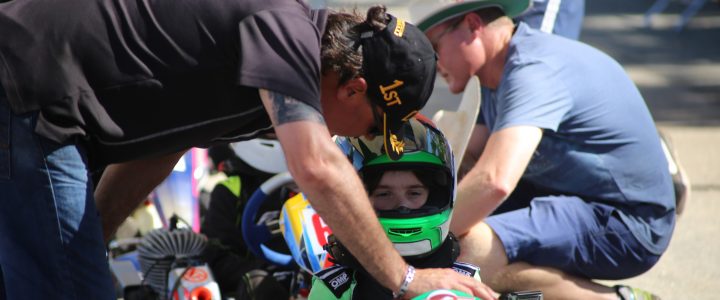
Everybody needs something.
Whatever you need, you may find it here.
Karting Australia also have a series of “how to” videos. They don’t give you all the nitty-gritty on everything, but they do give an overall picture and some good tips. For beginners, in particular, they’re worth a look.
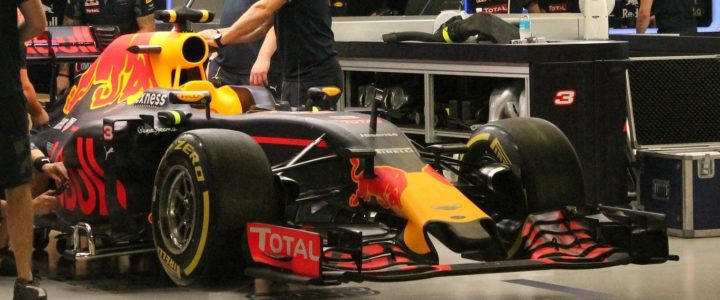
Supercars & Karts – same thing
Look at a go kart next to, say, a V8 Supercar or Formula One car and it’s pretty basic. Yet the principles are much the same. On track, they perform a certain way. Change something, and it will change the way they perform. And there are a surprising number of adjustments that can be made to a kart to change its performance and handling.
Apart from a couple of differences
Let’s look at an obvious difference. A kart doesn’t have suspension like regular cars. No springs or dampers to give you more direct steering or better grip. No differential to give you good drive out of corners. Stuff like that. So one way of controlling handling with karts is via flex.
Many karts will have torsion bars in different places that can be tightened, loosened or removed to make the chassis stiffer, or allow it to flex more easily. Sidepods can be tightened or loosened for the same reason.
Flex is also adjusted via different types of rear axles, and the way in which they are secured to the chassis. Then there’s alignment.
At the front end, straight is not always better. The front wheels can be made to point in or out, to “lean” in or out, and they can be “stood up” or laid back.
Gearing can be made long or short to focus on top end speed or “punch” out of corners.
Even the position of the driver’s seat will affect performance. We’ll look at all of that.
Check out the articles on Chassis, Front End, Rear End, Gearing and Engine Tuning.
Working on it. In the meantime, listen to this:
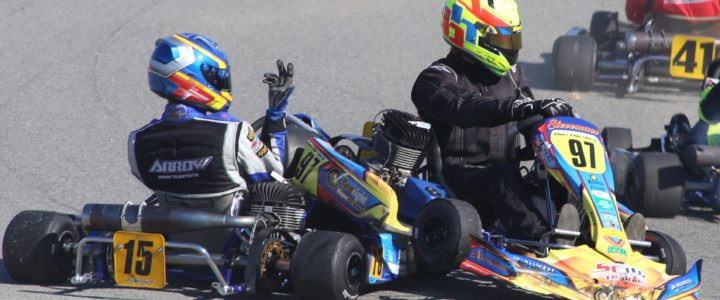

Don’t crash.
It costs money and you could end up hurt.
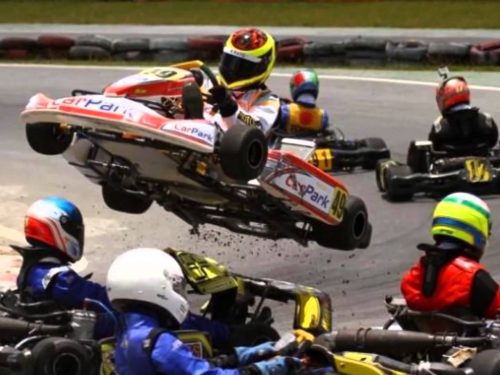
Don’t drive on the track opposite to the direction of racing.
Ever.
Yes, it’s exciting, but you’ll never win the race.